Peru, in western South America, is a diverse and ancient country. Once the home of the Inca, who left behind incredible cities within dense jungle and at unbelievable heights, Peru still holds festivals celebrating ancient rites and traditions. The most famous landmark in Peru is Machu Picchu, which is also one of the most visited landmarks in South America.
Peru is also filled with stunning vistas and natural landscapes, ranging from high climbs to only be undertaken with a guide or significant experience, to gentler walks to awe-inspiring canyons. The diversity of landmarks makes Peru one of the best countries to visit in South America. Here are 20 famous, historic and natural landmarks in Peru you must visit.
20 Landmarks in Peru
Famous Landmarks in Peru
1- Machu Picchu
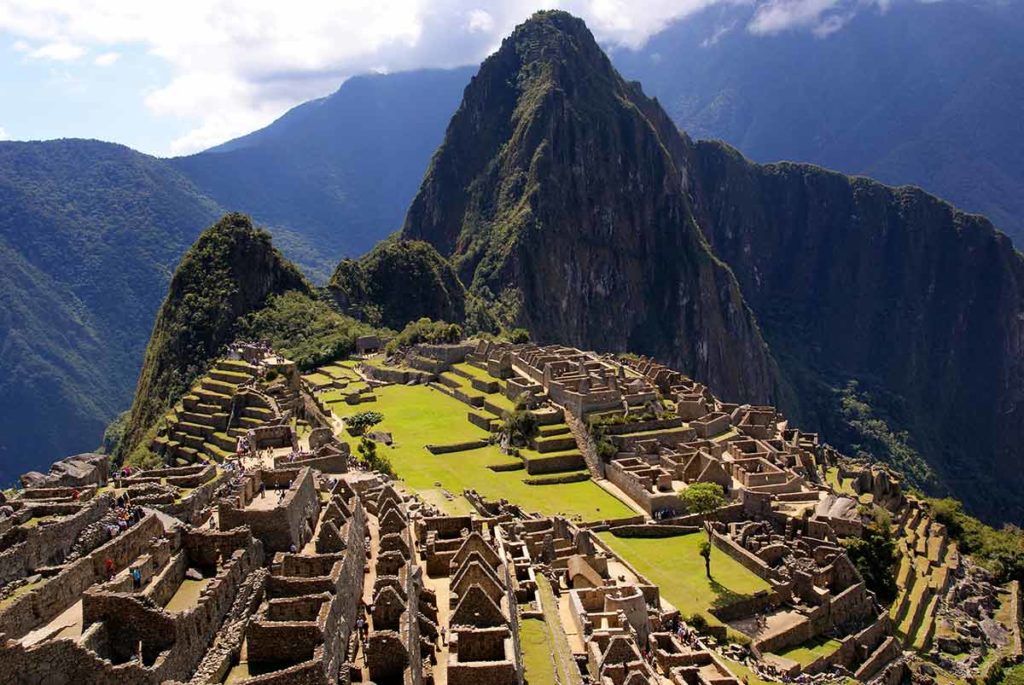
With its famous rocky outcrops, towering surrounding hills, cloud forests and mortarless stone structures, Machu Picchu is possibly the most famous Inca settlement in South America.
Machu Picchu is a citadel filled with plazas, palaces and temples, and sits on a high ridge above the Urubamba River.
Whilst the main draw of Machu Picchu is the settlement itself, a short but challenging walk away is the Temple of the Moon.
The temple is a cave-shrine filled with beautiful stonework and was believed to be used to house mummies.
Head to the hidden Museo de Sitio Manuel Chaves Ballon to learn more about why this incredible ancient site was built.
2- Nazca Lines
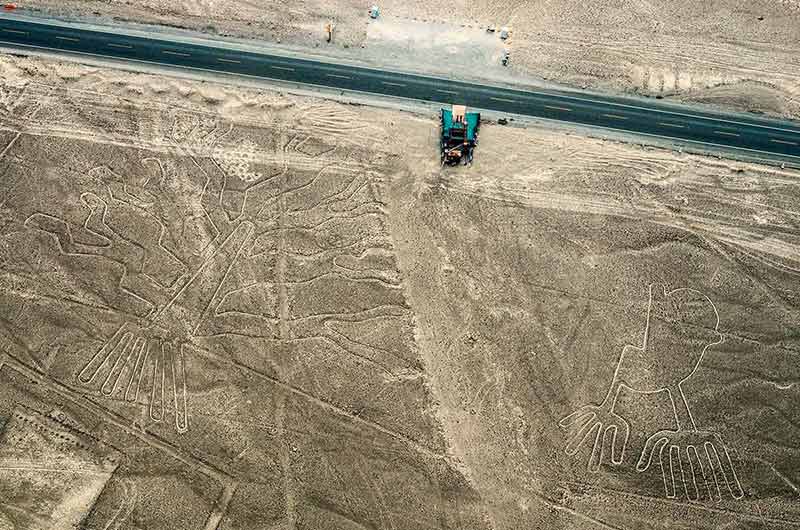
A collection of giant geoglyphs, designs etched directly into the ground, the Nazca lines are a must-visit landmark when in Peru.
The lines are on the Peruvian coastal plain and were created by the ancient Nazca peoples.
The lines mostly depict plants and animals, and can only be fully viewed from the air.
The best known Nazca lines consist of around 70 animals and plants, each stretching to around 1200 feet long, and include hummingbirds, cacti and lizards.
It is believed the lines were created during the Nazca periods of 100BC to anywhere between 1 and 700AD as the society flourished.
3- Chan Chan
Threatened to be eroded to memory due to frequent torrential rains in the area, the ancient city of Chan Chan is a must-visit landmark in Peru.
Chan Chan was once the largest adobe city in the world and was filled with colossal walls, maze-like passageways and streets, beautiful temples and palaces.
Today, much of the city has eroded away, however, there are efforts to preserve what is left of this historic site.
Many of the walls which are elaborately decorated in friezes are now covered to prevent further damage, with photographs available for visitors to see what the artwork looks like beneath its protective covering.
4- Tombs of Sipan
Discovered by an archeologist in 1987 in a frantic attempt to protect the site from looting, the Tombs of Sipan could easily be part of an Indiana Jones story.
The tomb houses a footless guard, presumably crippled so he could eternally guard whatever lay beyond.
In an internal tomb lie the mummified remains of the ancient Lord of Sipan, and an incredible hoard of jewels, riches and gold.
Alongside the tomb of the Lord of Sipan were 14 other tombs, equally lavishly filled and well preserved.
The finds from the tombs are now on display, and even feature a replica of the tomb upon its discovery for visitors to explore.
5- Caral
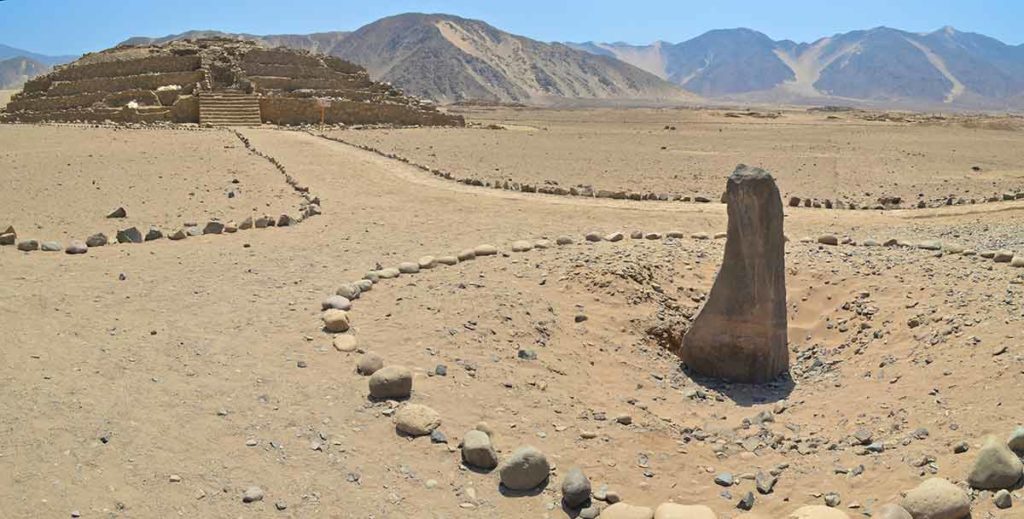
Developing at the same time as other great ancient civilisations such as Egypt and Mesopotamia, Caral is a 5000-year-old sacred city that is not to be missed when visiting Peru.
The city is located in the Supe Valley, where the land was fertile and the sea was close by, allowing for the civilisation to flourish.
Much of the remaining buildings were made from mud bricks, which were used to create circular plazas and even pyramids, of which there were once six.
Whilst visiting the site, look out for the archeological finds unearthed during digs at Caral which include bone flutes and quipus, a method of tying knots to record information.
6- Inca Trail
Often named as the most famous trail and trek in South America, the Inca trail through the mountains of Peru is a spectacular landmark that should not be missed.
The trail covers 26 miles of incredible scenery as hikers trek to famous Incan landmarks.
Whilst walking the trail, hikers will pass through dense jungle and cloud-forests before reaching landmark Incan destinations such as Machu Picchu.
Several other ruined settlements are explored on the trail, such as Llactapata, a once lost city that was only discovered in 2003.
Also read:
- 20 USA Landmarks
- 23 Canada Landmarks
- 22 Ohio Landmarks
- 21 Arizona Landmarks
- 21 Minnesota Landmarks
- 21 Oregon Landmarks
- 21 Illinois Landmarks
- 21 Colorado Landmarks
- 21 Georgia Landmarks
- 21 Michigan Landmarks
- 23 Los Angeles Landmarks
- 21 Washington Landmarks
- 21 Maryland Landmarks
- 20 Manitoba Landmarks
- 20 Kansas Landmarks
- 21 New Mexico Landmarks
- 20 Idaho Landmarks
- 20 Montana Landmarks
- 20 Oklahoma Landmarks
- 21 Wisconsin Landmarks
- 20 Tennessee Landmarks
- 21 Iowa Landmarks
- 20 Alaska Landmarks
- 20 Miami Landmarks
- 21 West Virginia Landmarks
- 21 Kentucky Landmarks
- 20 Louisiana Landmarks
- 21 Arkansas Landmarks
- 20 Cincinnati Landmarks
- 20 San Antonio Landmarks
- 25 Indiana Landmarks
- 21 New York Landmarks
- 20 Texas Landmarks
- 21 Boston Landmarks
- 20 Florida Landmarks
- 20 Hawaii Landmarks
- 5 South Dakota Landmarks
- 21 Pennsylvania Landmarks
- 23 New Jersey Landmarks
- 21 Virginia Landmarks
- 21 North Carolina Landmarks
- 21 Utah Landmarks
- 21 Nevada Landmarks
- 20 Massachusetts Landmarks
- 20 Washington DC Landmarks
- 20 Vermont Landmarks
- 20 Nebraska Landmarks
- 20 North Dakota Landmarks
- 21 Missouri Landmarks
- 20 Rhode Island Landmarks
- 21 Maine Landmarks
- 21 Connecticut Landmarks
- 20 San Diego Landmarks
- 20 Landmarks In South Carolina
- 20 Mississippi Landmarks
- 20 Las Vegas Landmarks
- 20 Dallas Landmarks
- 20 Houston Landmarks
- 20 Seattle Landmarks
7- Colca Canyon
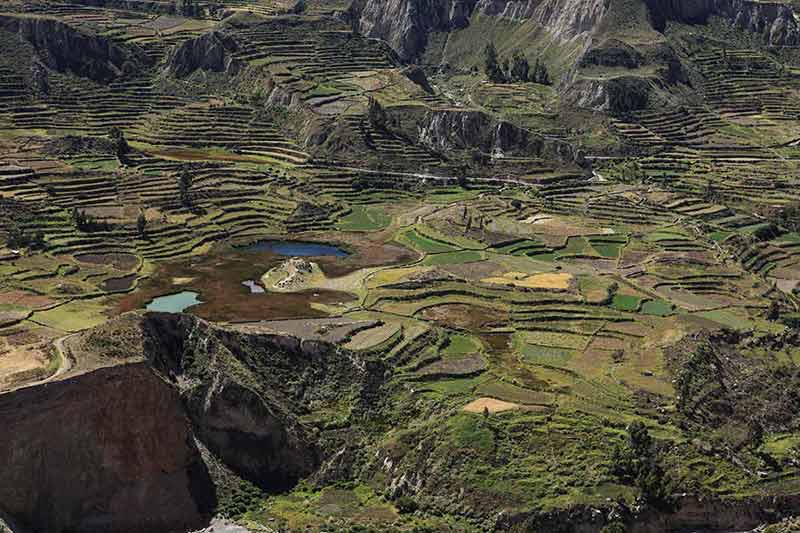
Often bypassed by tourists for the Inca landmarks of Peru, Colca Canyon is a breathtaking sight to behold.
Notoriously difficult to get to, the canyon is part of the Andes and is very remote, with the nearest major city being over 160km away.
The canyon, for those that brave the journey, is twice as deep as the Grand Canyon in America and winds its way through the Andes along the river.
The canyon is one of the best locations to spot the Andean Condor, the largest flying bird on Earth.
8- Gocta Falls
A hidden gem for thousands of years, and undocumented on any map until 2005, Gocta Falls is the third tallest waterfall in the world.
The falls consists of two tiers of cascading water breaking through the forest.
Gocta Falls was only known about by a local village located almost immediately below the falls.
The name Gocta was given to the falls by the villagers after the noise made by howler monkeys.
There are many local superstitions surrounding the falls, but they certainly make for a majestic stop on anyone’s Peruvian landmarks tour.
9- Marcahuasi
There is much debate as to whether the unique and unusual stones at Marcahuasi are ruins and remnants from a society from approximately 10,000 years ago, or that they are simply the result of ongoing erosion.
The rocks appear to resemble animals and humans, and close by are other potential structures that could make it plausible that the carvings were intentional and marked a once-prosperous society.
The rocks are sometimes known as the stone forest and are believed to harbour healing vortexes.
It is believed that at least 22 vortexes of healing energy are present here, with many who believe heading to the site to seek out the energy.
10- Lake Titicaca
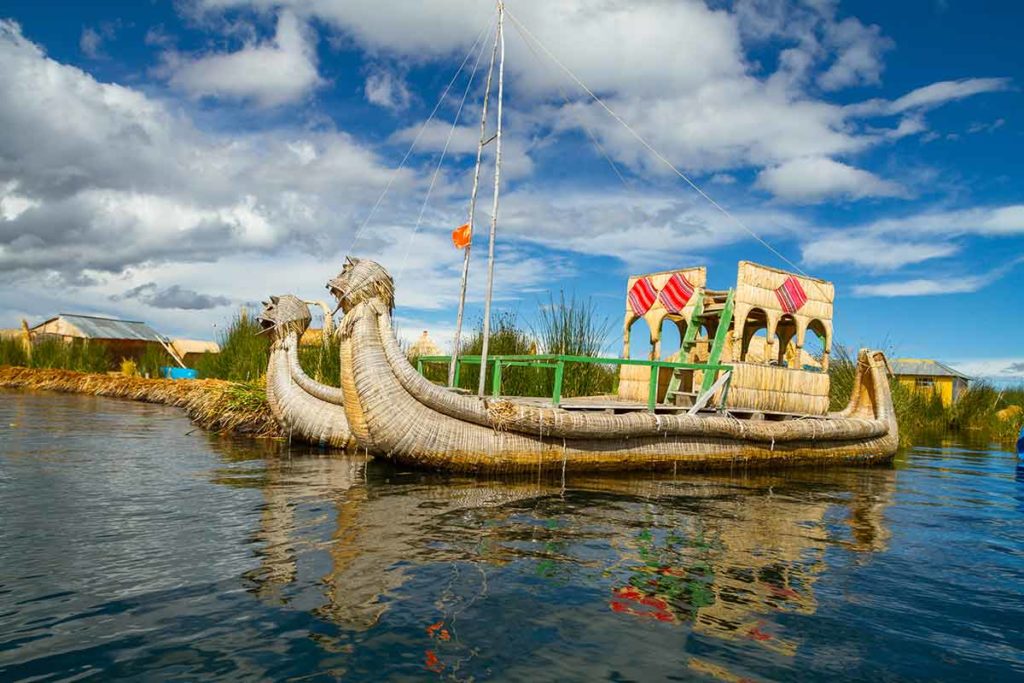
Lake Titicaca is the highest navigable body of water in the world, at 3800 meters above sea level.
The lake sits along the border of Peru and Bolivia.
Due to its altitude, there are many spectacular species of wildlife to look out for, including Chilean pink flamingos.
Surrounding the lake are many ancient architectural sites of civilisations who relied on the lake and its waters for sustenance.
The lake, like many natural sites in Peru, is home to numerous myths and legends.
It is said that the creator emerged from Lake Titicaca before creating the Sun, Moon and stars.
11- Cordillera Blanca
Cordillera Blanca is the highest tropical mountain range in the world and has over 6000m of peaks, with mountains running from north to south.
The range features snow-capped peaks and tranquil turquoise waters of glacial lakes.
The highest mountain within the range is Necado Huascaran, which peaks at 22,334 feet.
A popular spot with climbers, the Cordillera Blanca range has many climbs suitable for all levels.
Cordillera Blanca hosts a wealth of biodiversity and is home to 112 registered species of bird, many of which are native to the range.
12- Huacachina
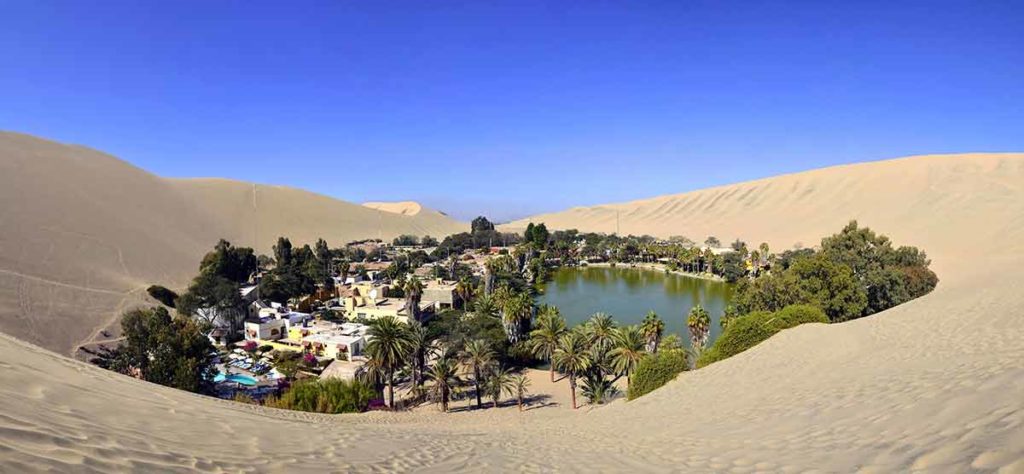
Huacachina, a desert oasis whose waters were once thought to have healing powers, is in the rolling sand dunes of Peru.
Legend has it that a young woman fell in love with a warrior who was killed in battle.
Upon hearing of his death, she began to cry.
When she looked in a mirror, she saw the warrior looking back at her. In fear, she ran, dropping the mirror which became the lagoon.
The woman dived into the lagoon and became a mermaid.
Today the oasis is a popular spot for dune buggy racing, sandboarding, and watching the sunrise above the dunes.
13- Lake 69
Lake 69 is at an altitude of 4500m above sea level and sits within the Huascaran National Park.
The hike up to Lake 69 is often completed in a day and takes in waterfalls, mountains and native animals before reaching the lake.
The waters are turquoise and make for a spectacular rest stop on your hike.
Due to its elevation, a few days of acclimatisation are recommended before starting a trek.
The weather at these altitudes can change quickly, so trekking with a guide is recommended.
14- Vinicunca
There are many magical sites in Peru, but none so much as Vinicunca, the rainbow mountains.
The colours streaked across the mountains range from lavender and terracotta to turquoise.
Vinicunca gets its colourful streaks from the atmosphere in the area and sediment.
This beauty spot was once true hidden treasure and is notoriously difficult to get to, however, there are now bus tours running regularly up to the mountain.
Guided hikes are offered in the area and include other local sites such as hot springs, the Ausangate Glacier, and of course plenty of llamas.
For more amazing European Landmarks, read:
- 30 Spain Landmarks
- 20 Switzerland Landmarks
- 22 Germany Landmarks
- 35 London Landmarks
- 30 France Landmarks
- 20 Italy Landmarks
- 20 Greece Landmarks
- 20 Russia Landmarks
- 20 Scotland Landmarks
- 20 Ireland Landmarks
- 21 Wales Landmarks
- 20 Turkey Landmarks
- 20 England Landmarks
- 20 Hungary Landmarks
- 21 Romania Landmarks
- 20 Ukraine Landmarks
- 20 Athens Landmarks
- 20 Rome Landmarks
- 20 England Landmarks
- 20 Portugal Landmarks
- 20 Poland Landmarks
- 20 Iceland Landmarks
- 20 Bulgaria Landmarks
- 21 Croatia Landmarks
- 20 Bulgaria Landmarks
- 20 Austria Landmarks
- 21 Finland Landmarks
- 20 Sweden Landmarks
- 20 Denmark Landmarks
- 20 Belgium Landmarks
- 20 Netherlands Landmarks
- 20 Barcelona Landmarks
- 21 Czech Republic Landmarks
- 20 Landmarks in Paris
- 20 Landmarks in Liverpool
- 10 Istanbul Landmarks
Historic Landmarks in Peru
15- Moray
In the Cuzco region, Moray is a series of ringed Incan ruins.
Archeologists have long been conflicted over what the rings represent, however, it is widely believed that they were part of an ancient form of agriculture.
Moray in its design is relatively simple in comparison to other Incan sites, however, for agricultural purposes, the design was very effective.
Each ring is filled with a different soil found across the region, that may have been used to farm different crops.
As each ring is varied by depth, with some as deep as 30 meters, each ring has its own micro-climate and could therefore be used to grow a range of crops.
16- Basilica y Convento de San Francisco de Lima
Dating from 1774, the Basilica y Convento de San Francisco de Lima is a beautiful example of Spanish Baroque architecture, with some unusual hidden features.
The basilica itself is buttercup yellow, and houses a monastery, convent and a library filled with over 25,000 antique books, with some dating back to before the Spanish Conquest of Peru.
Watching over the main staircase is an ornate carving of a Moorish-style cupola which was carved from Nicaraguan cedar in the early 1600s.
Visit the catacombs, where the walls are decorated with human bones, a feature of many catacombs of the time.
17- Plaza de Armas
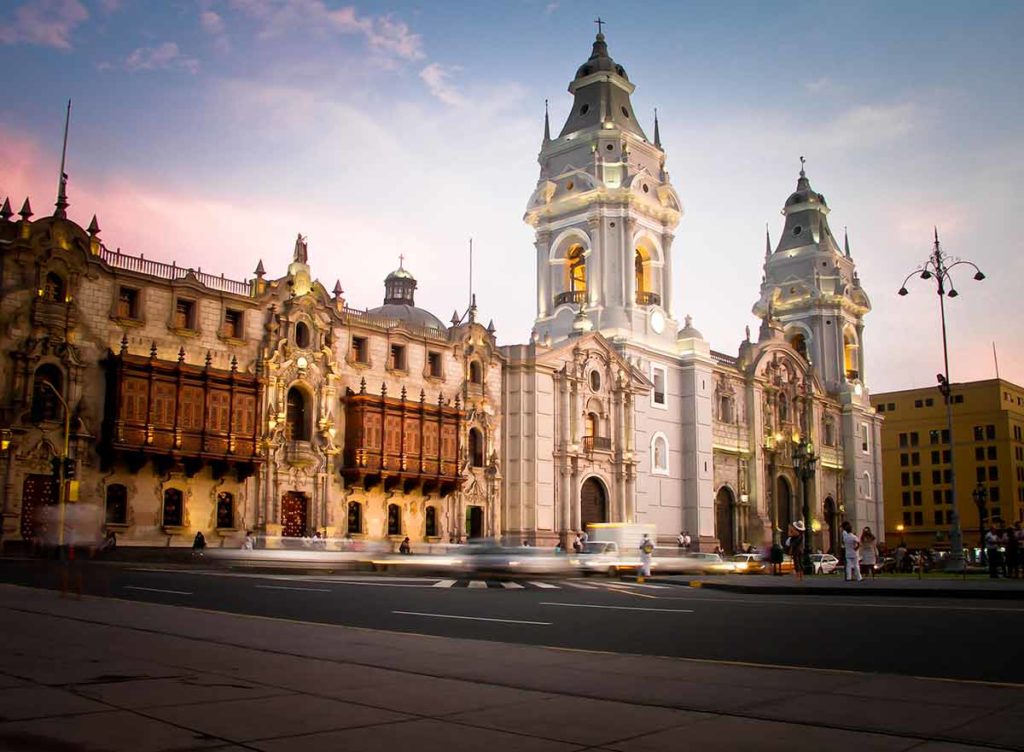
Plaza de Armas in Lima is a must-visit landmark in Peru.
This historic square is home to the Palacio de Gobierno, the Government Palace and many other ornately finished buildings.
Head to the Aliaga House, the oldest house in the Americas.
The house was built when the Spanish founded Lima in 1535.
The courtyard is filled with tropical plants, ferns and palms, and is an excellent example of colonial architecture.
One of the most lavish buildings in Plaza de Areas is the Archbishop’s Palace.
Built in 1924, this ornate building features intricate carvings into the white facade, and like many of the buildings in the Plaza, it is lit up at night.
18- Kuelap
Often overlooked by tourist hotspots such as Machu Picchu, Kuelap is a must-see historical landmark in Peru.
Like many of Peru’s landmarks, Kuelap is at a high altitude, with visitors often standing above the cloud level.
The site was settled more than 1500 years ago and was protected by the Cloud Warriors.
The site is mostly in ruins and alpacas and llamas have moved in, however, if travelling with a local guide, the ancient city comes to life.
Take a closer look at the rocks, where designs of jaguar and snakes can be seen.
19- Choquequirao
Peru is filled with ancient Incan ruins, with each one more intriguing and magical than the last.
Choquequirao is no different.
Beyond the crowds of Machu Picchu, Choquequirao is nestled in the Peruvian Andes.
The hills are fabled throughout Incan legends and are a spectacular sight in the Apurimac Valley.
The site is said to be three times the size of Machu Picchu and is well preserved considering its remote location and age.
Today, archeologists have only uncovered around 30% of the site, as much of it is covered by thick jungle.
20- Ollantaytambo
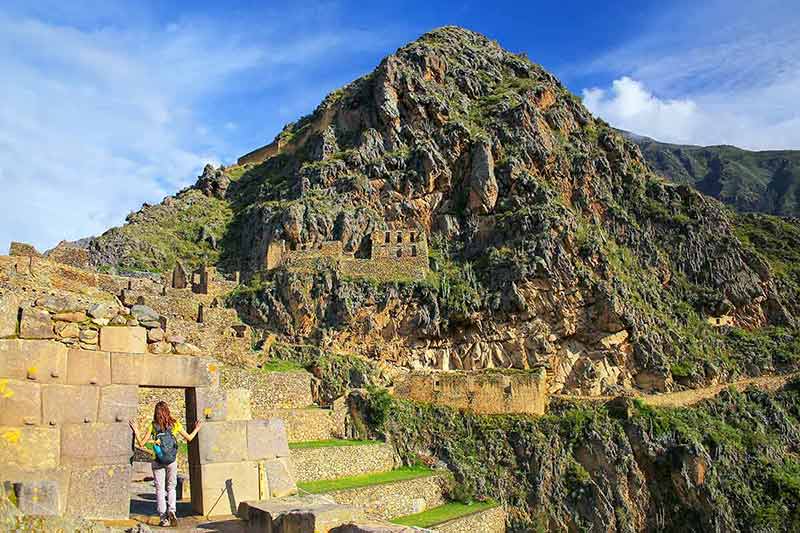
Nestled in the northern end of the Sacred Valley, Ollantaytambo was the last Incan stronghold during the Spanish Invasion of Peru.
The Inca cut terraces into the mountainside for irrigation and farming.
These structures are now known as the Fortress or Temple Hill.
Head to the Temple of the Sun, which was once used as a calendar to track the winter and summer solstices.
Within the temple is the Wall of the Six Monoliths, six gigantic 50-tonne stones brought to the site from nearby quarries.
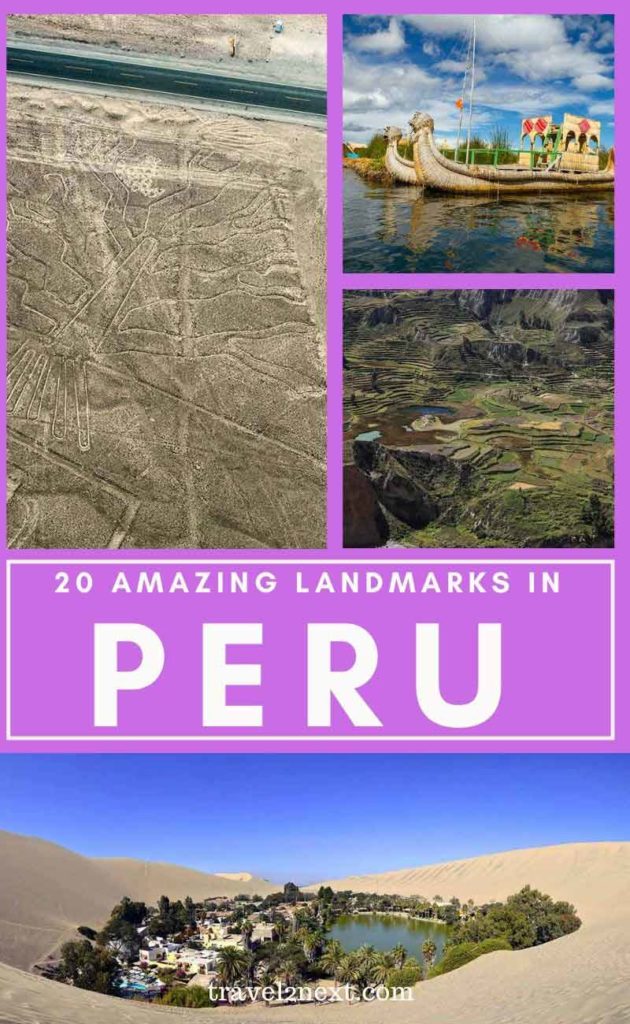
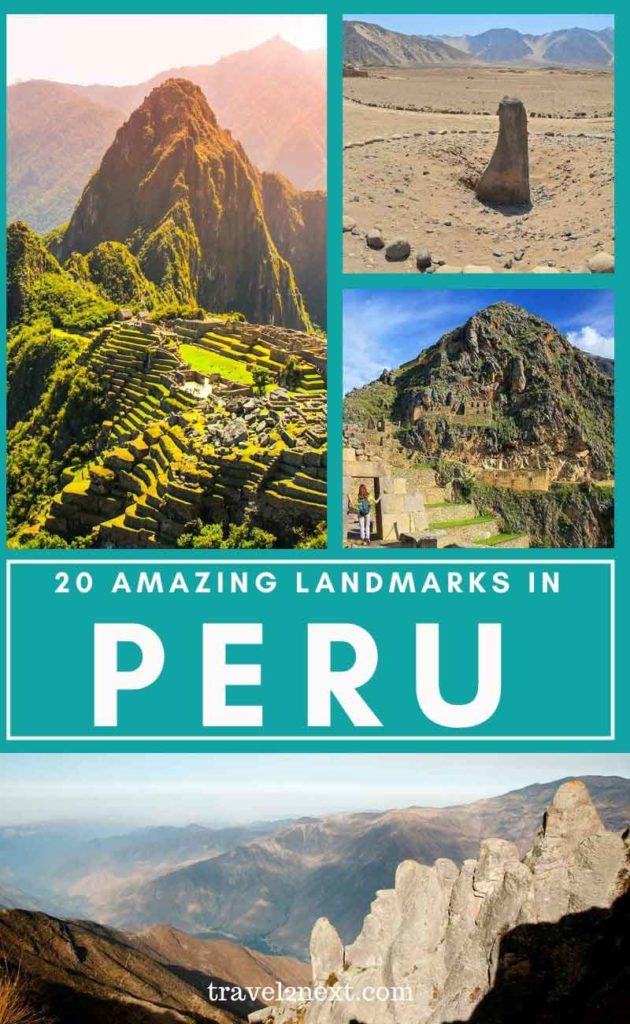
Plan Your Trip

Rent A Car – Find the best car rental rates at Discover Cars. They compare car hire companies to provide you with the best deal right now.

Find A Hotel – If you’re curious about this article and are looking for somewhere to stay, take a look at these amazing hotels.

